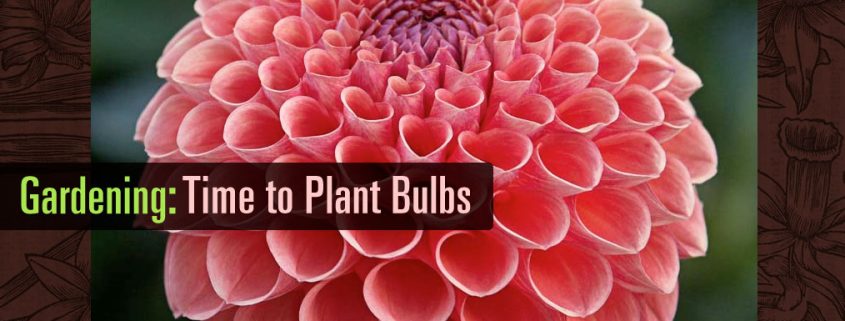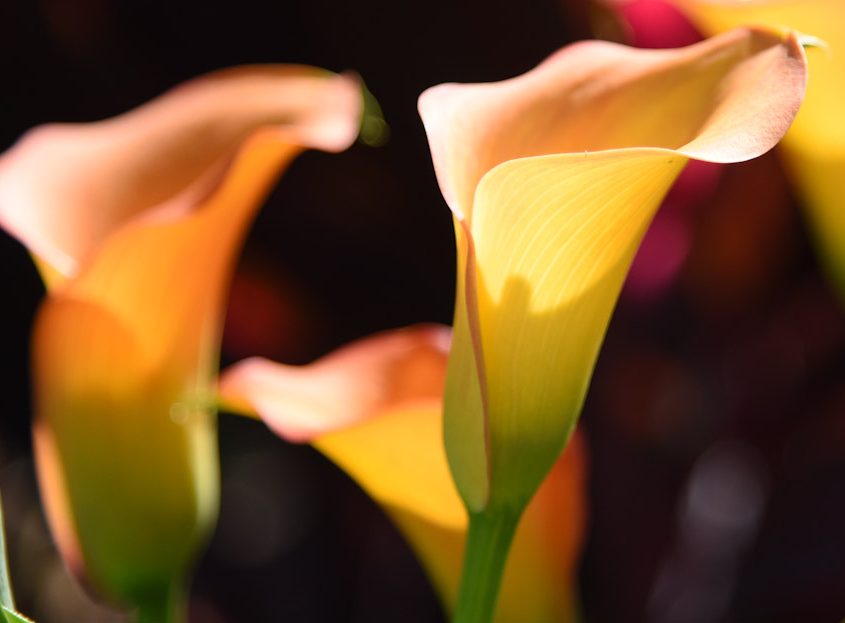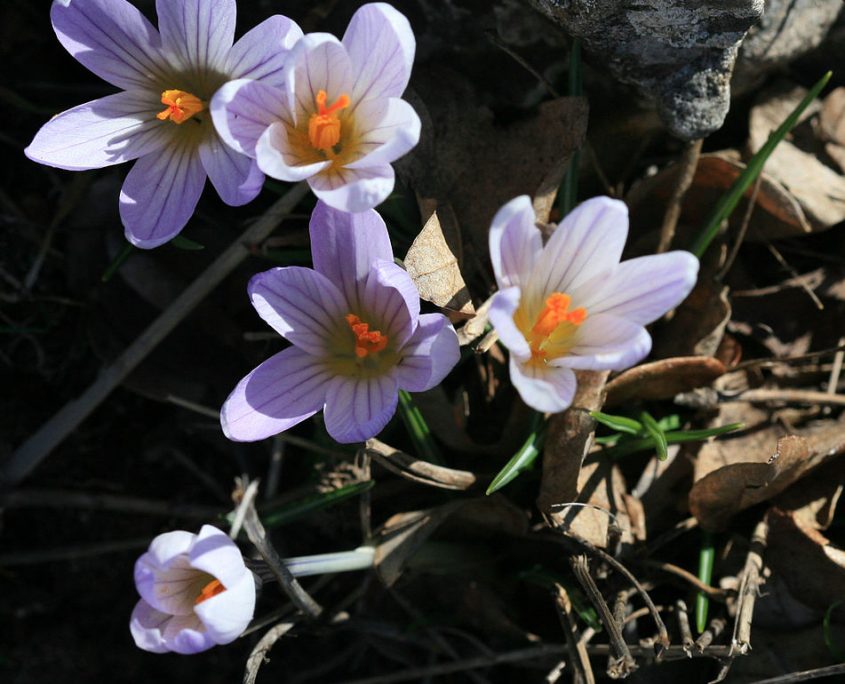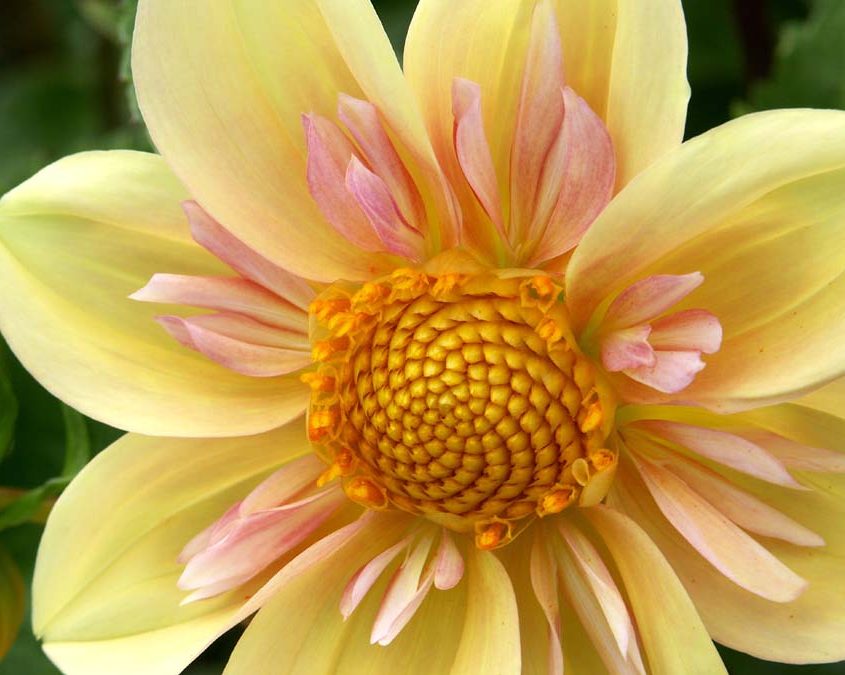Fall Gardening III: The Magic of Bulbs
Cary, NC – Bulbs produce some of the most spectacular flowers in nature. They can come back year after year, multiply freely and require little to no work. Magic! And, almost magically, now is the time to plant them.
What’s a Bulb?
For gardeners, bulbs are herbaceous perennials grown for ornamental purposes which have underground or near ground storage organs. Bulb species usually lose their upper parts during adverse conditions such as Summer heat or Winter cold. The bulb’s underground storage organs contain moisture and nutrients that can survive these adverse conditions in a dormant state. When conditions become favorable again (i.e. springtime), the reserves sustain a new growth cycle.
Botanists distinguish between true bulbs, corms, rhizomes, tubers and tuberous roots, any of which may be termed “bulbs” in horticulture and for our purposes.
Four Ways to Use Bulbs in the Garden
- A Spot of Color – Bulbs can be squeezed in between other plants like perennial shrubs and Summer flowers. Many bulbs retain attractive green leaves after the flowers have faded making them excellent companion plants.
- The Main Show – Bulbs can also be the main show of your garden. Think Canna lilies, six feet tall and blooming all summer with thick, tropical leaves.
- Succession of Color – Bulbs have very regular habits: crocus flowers come in January, daffodils in February. Tulips follow sooner after, then irises, then lilies. By making judicious plantings around your garden, you can create a succession of color all year long.
- Naturalizing – Finally, many bulbs will naturalize, returning year after year and even spreading and multiplying.
Bulbs – So Easy to Plant
Dig a hole in the ground. Drop in the bulb. You’re done.
The size of the hole should be proportional to the size if the bulb. Small bulb, small hole. Bigger bulb, bigger hole. Many common bulbs require a hole about the size of a soup can. You can buy a bulb-digger tool at the garden store. One push-turn and you’re ready to plant.
Usually, bulbs have an obvious top and bottom. When you plant, orient the roots downward and the growing tip upward. Cover with dirt. Water if you like. Forget about them until Spring.
Favorite Bulbs for the Piedmont
Spring Flowering
- Allium – A relative of garlic, ornamental alliums come in a variety of sizes for pots and naturalizing. Giant Allium can throw a stalk several feet in the air with a flower head six inches across.
- Crocus – First flowers of late-winter. Great for a small spot.
- Freesia – Small, attractive flowers in the Spring. Great for a small spot.
- Hyacinth – Perhaps the most fragrant flower in the garden. Great for a small spot. Plant lots of them.
- Narcissus (Daffodils) – Fabulous show in February when planted in mass.
- Irises – One of nature’s most interesting flowers. Attractive spiky foliage.
Summer Flowering
- Alstroemeria (Peruvian Lily) – Come in many shades of red, orange, purple, green and white, flecked and striped and streaked with darker colors.
- Amaryllis – One of the showiest flowers in the garden. Two to twelve individual blooms radiate from a single stem. Usually white with pink and purple accents.
- Canna Lily – Tropical foliage, long Summer show of bright flowers.
- Calla Lily – Elegant, long lasting bloom of large, pitcher-shaped flowers in yellow, apricot and orange.
- Dahlias – Related to the Aster family, Dahlias produce very showy flowers with a stupendous variety of shapes including ball, star, collorette and cactus dahlias. Centuries ago, dahlias were a food crop for the Inca.
- Stella-Doro Daylily – This is a specific variety of daylily. You see them everywhere in Cary. They produce flowers for many, many weeks and need literally no care.
Advice for Gardeners
Buy a few small bags of bulbs. Dig some holes and get them into the ground. Stand back and wait for the magic in Spring.
Related
Story by Hal Goodtree. Photos: Collerette Dahlia and Ball Dahlia by ;Crocuses by ; Calla Lilies by Hal Goodtree. The Gardening column on CaryCitizen is sponsored by Garden Supply Company on Old Apex Road in Cary.







